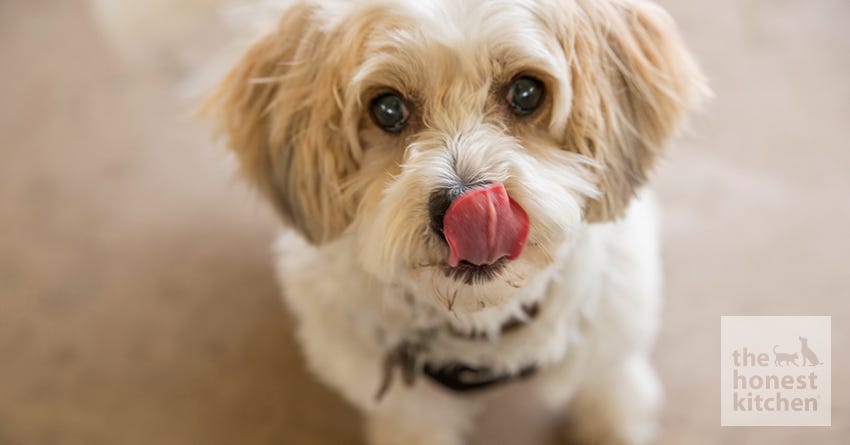Teaching Your Dog Good Food Manners

Some dogs seem to naturally have good food manners;
they don't crowd other dogs away from food, don't gulp their own food as if it's the last thing they'll ever get to eat, and don't grab have their owner's hand when offered a treat. Other dogs, however, are a bit more greedy when it comes to meal and treat times (their own or their owner's). Good food manners can be taught though and these skills can help lessen your dog's excitement, anxiety, or possessiveness around food.Establish a Schedule for Meals
Three meals a day is suggested for retraining a dog with poor food manners. By feeding him three meals, you will prevent him from becoming overwhelmingly hungry. His primary meals can be morning and evening but then have a smaller meal sometime during the day; that time being set according to your daily schedule. Scheduled meals will help keep your dog's appetite and hunger on a more even keel and by doing so, prevent some of the emotional highs and lows concerning his food. The schedule doesn't have to be etched in concrete; at 6:30am and 6:30pm on the dot every day, for example. Dogs are very good at becoming fixed to a schedule and if his feeding times are not flexible, then he'll become agitated at any changes. Instead, feed him his morning meal at any point within, say, an hour before you leave for work. Dinner can be any time within an hour of your normal dinner time. I generally feed my dogs prior to eating my own meals. Although, many trainers commonly recommended (or still do recommend) eating your meals first before feeding the dogs, I feel this isn't as important as we once thought it was. Do what works best for you and your family.Feed Part of his Meal By Hand
Years ago, dog owners were told to put their dog's meal in a bowl and put it on the floor for the dog to eat. Dog owners were never, ever, to feed their dog food by hand because it would spoil them. Well, as with all professions, we continue to learn every day and this is one of those rules that has fallen to the wayside. When I bring home a new puppy, adopt a new dog, or am working with a dog who has food issues, I feed at least half of the dog's meal by hand. I feel this gives me a wonderful opportunity three times a day to show the dog I provide his food and that he can learn to take it nicely from me. These times are both great bonding opportunities as well as good training sessions. When offering food by hand (a piece of meat or other easy to handle foods) I will hold the food in my closed hand to the dog. He is then to gently nose or lick my hand and I'll open my hand so he can take it. If the dog touches me with teeth to grab the food, my hand remains closed. When feeding The Honest Kitchen's foods, I offer the foods on a spoon and let the dog lick the food off a spoon. Not only can this slow down a food gulper, but it's a great skill. If you need to give your dog medication one day, putting a bit of food on a spoon with the pill buried in it is a great way to make sure your dog gets the medication. After feeding at least half of the meal by hand, I give the dog his bowl to finish the rest of his meal in peace. Don't put your hand in his bowl or mess with his food; that is only going to make him more anxious.Tools to Slow Food Gulpers
If, when given his food, your dog eats as if it's his last meal, you'll want to slow him down a bit. Not only is the dog who gulps his meal unsatisfied (his stomach hasn't yet told his brain that he's full) but many gulpers will vomit after eating because they've shocked their stomach by taking in too much food too quickly. Some dog owners will place some smooth stones that are too large for the dog to swallow in with the dog's food so that as he's eating, the dog will have to move the stones around in the bowl to get to the food. There are also commercially available bowls with pillars that come up from the bottom of the bowl that serve the same purpose. There are many food dispensing toys on the market now that can be loaded with your dog's meal (or treats) and with these, he has to move or otherwise manipulate the toy to get his food. These range from simple (for puppies) to more advanced. You can also slow down a gulper by feeding him half or more of his meal by hand. When you've fed him at least half of his food, asking him to sit while he eats and asking him to take it gently, then give him the rest of his food. ©istockphoto/sanjagrujic
©istockphoto/sanjagrujic

